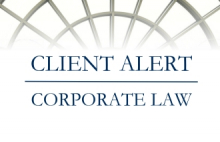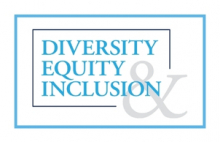“Mac” Attack: McDonald’s Loses Its European “Big Mac” Trademark by Failing to Prove Actual Use
February 2019For many years, the Hamburglar was famous for his attempts to steal McDonald’s most valued property – its burgers. However, the European Union Intellectual Property Office (EUIPO) has just taken something even more valuable from McDonald’s: its trademark in Europe on “Big Mac.” On January 11, 2019, the EUIPO cancelled McDonald’s “Big Mac” trademark on grounds that McDonald’s had not adequately proven that the “Big Mac” trademark was still in actual use from 2011 to 2016. Although such a conclusion seems inconceivable given the global use of the “Big Mac” trademark, this case highlights the need for intellectual property owners to take all attacks on their trademarks seriously and respond to any conflict with sufficient evidence.
The “Big Mac” trademark’s downfall began when an Irish fast-food restaurant, Supermac’s, requested that the EUIPO cancel the “Big Mac” trademark due to its not being used continuously for the previous five years. In EUIPO trademark cancellation proceedings, the trademark owner has the burden of proof to show that the trademark has been used. In response to the cancellation request, McDonald’s did not submit actual use of its trademark through customer surveys and detailed sales information, but instead submitted secondary evidence, including (1) three affidavits: from employees in Germany, France, and the United Kingdom; (2) brochures and advertising posters; (3) printouts of McDonald’s websites in various European Union countries; and (4) a webpost from Wikipedia regarding the Big Mac hamburger history. In the end, the EUIPO determined that McDonald’s failed to meet its burden in showing that the “Big Mac” trademark was actually being used.
The evidence that McDonald’s submitted was heavily discounted by the EUIPO for not being independent and for omitting key information that would have enabled the EUIPO to find in favor of McDonald’s. First, the EUIPO noted that affidavits from trademark owners, as well as any evidence supplied directly from trademark owners without corroboration, are generally less persuasive than independent evidence. This is because the trademark owner has a stake in maintaining the trademark. Furthermore, the employee affidavits provided only sales numbers of Big Macs in each country from 2011 to 2016 and examples of brochures and printouts of advertising posters bearing the “Big Mac” trademark. The sales numbers themselves were very large: around 250 million Big Macs per year over the relevant period. But, because the figures lacked specificity as to when, where, and how those sales were made, the EUIPO heavily discounted this evidence. The brochures and printouts of advertising posters suffered from similar issues because no evidence was submitted showing that the materials were actually used. The website evidence was also found unpersuasive because there was no evidence that the websites were used to fulfill orders. Finally, the Wikipedia article was dismissed as being an unreliable source. In the end, the EUIPO determined that McDonald’s did not provide sufficient evidence to show that the “Big Mac” trademark was actually being used in the European Union.
This outcome may be difficult to comprehend at first glance. On its face, the decision seems unreasonable, in part, because one assumes that most consumers in Europe know what a Big Mac is and where it can be purchased. However, the EUIPO took the position that McDonald’s did not provide specific evidence related to where, when, and how sales of the Big Mac were made, which the EUIPO explained is required to establishing the extent of use of the “Big Mac” trademark. Accordingly, it appears that more detailed affidavits and independent evidence, such as customer surveys or points of sale data for the Big Mac, may be sufficient to prove McDonald’s use of the “Big Mac” trademark. All is not lost for McDonald’s, which has announced that it intends to appeal the decision and is confident that the EUIPO Board of Appeals will overturned.
This case provides lessons for all intellectual property owners. First, victory is never certain in an intellectually property conflict, even in the most meritorious of cases. This is particularly true in trademarks, where the issues are often inherently subjective. Second, in any conflict, the party with the burden of proof must supply the necessary evidence to the satisfaction of the decision-maker and cannot rely on knowledge of facts outside of the record to fill evidentiary gaps.
If you have questions about how to protect your creative works and inventions, license the works of others, challenge the intellectual property of others, or respond to an intellectual property conflict, the intellectual property attorneys at Lewis Rice can help.








